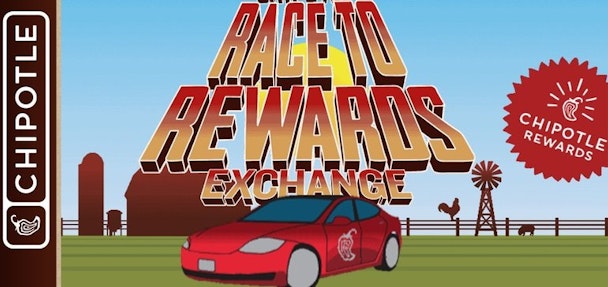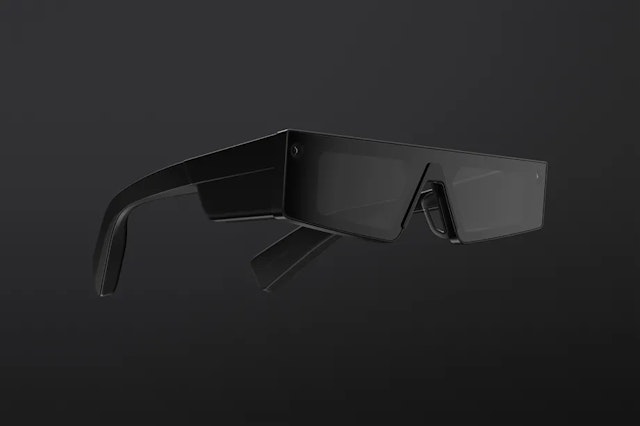Media Innovation Round-Up: Snap’s specs vision, Facebook Watch, Chipotle in gaming
Marek Wrobel vigilantly tracks emerging media tech for Havas Media Group. For The Drum, in the Media Innovation Round-Up, Wrobel explores ‘new and shiny’ tech and its role in the ever-evolving marketing mix.

Chipotle has launched a racing video game to celebrate a new update to its loyalty program
Snap Glasses: Fourth Gen

Snap chief exec Evan Spiegel has unveiled the company’s first true augmented reality glasses, capable of superimposing AR effects on the real world. With new Spectacles available to only a limited number of influencers and developers, when will we able to get our hands on a pair of smart glasses?
Smart glasses are still haunted by the failed Google Glass, but it’s really time to get over it. Some of the biggest companies in the world have invested in smart glasses, with headsets from Microsoft, Magic Leap and Snap already on the market and rumored headsets from Apple, Facebook and Google launching in the near future. With names like these behind the platform, what’s holding it back?
First of all, there is cost, with Hololens 2 priced at over £3,000. Privacy is also a big one. Smart glasses require loads of sensors to work – cameras, accelerometers, microphones and so on – so there are lots of privacy-related questions to be answered.
And then there are challenges with the hardware itself, or rather how to stuff glasses with a long-life battery and enough computing power to offer magical AR experiences. Not to mention the optics – even in the promotional videos for Spectacles, one can see how small the field of view is.
And lastly, they all look... bulky. I attended a wearables-focused conference a few years ago and the message was clear – in order for smart glasses to take off, the tech needs to be invisible and the glasses themselves need to look fashionable.
Thankfully there is some good news. With so many major players entering and championing this technology, costs are steadily going down. ‘Lidar’ can to some extent help with the privacy issues – it’s a way to determine ranges by targeting an object with a laser and measuring the time for the reflected light to return to the receiver (almost like Marvel’s Daredevil). Apple has already added a Lidar scanner to Phone 12 Pro (and iPad Pro) and both Snap and TikTok have launched AR experiences harnessing the technology.
Some hardware issues can be resolved by making smart glasses extensions of the smartphone – similar to the way in which the iWatch is synced to your iPhone. This is exactly the rumored approach for headsets from Apple and Facebook. And the cool factor? Well, this is exactly what Apple is known for. And in the case of Facebook, it has partnered with Ray-Ban, which I think is an interesting move. So, while it will take time, the smart glasses saga will definitely be a fascinating one.
Chipotle and advergames
Chipotle has launched a racing video game to celebrate a new update to its loyalty program, enabling players to access the game via desktop and mobile devices through a brand microsite. How can advergames help you to engage your audiences?
There is no doubt gaming is becoming a playground for brands. In the past, I have explored the potential of in-game placements, in-game events, avatar marketing and game streaming, so now let’s take a look at advergames.
The concept should not need any introduction as it’s been around for a while – the first-ever advergame was launched in 1983. It was called Tapper and created by Budweiser and it was, believe it or not, an arcade game. And since then, there have been lows – like the E.T. game, which holds the title of ‘the worst game ever’ – and highs, with advergames turning into standalone IP. This includes Minions Rush, produced by Gameloft in 2013, which celebrated hitting 1bn downloads just a few weeks ago. However, many brands have been wary of advergames as historically they have required users to either buy them, or – gasp – install an app.
Worry not – with developments in the webspace it is now possible for brands to create advergames that can offer a gaming experience that is just a click away. Brands including Netflix, Estee Lauder, ANA Airlines, Honda and Burberry have been leveraging them to create and deepen engagement and/or connect with new audiences. And advergames seem to work. Based on research titled ‘The Gamification of Branded Content: A Meta-Analysis of Advergame Effects’ published in the Journal of Advertising, advergames are perceived favorably and can trigger a powerful emotional response, driven by customers interacting with your brand.
SoPost and online sampling
Online sampling platform SoPost has launched a digital community partnership with OK Magazine, allowing its readers to receive free product samples while providing leading beauty brands with powerful consumer data and feedback. How can digital sampling benefit your brand?
With 47% of UK customers saying that the biggest value in in-store experiences is the ability to touch, see and try on products, and with 87% eager to receive free samples, it comes as no surprise that sampling is an integral part of the in-store shopping experience – both for customers and brands. However, Covid has disrupted the in-store experience, which has at the same time accelerated our shift to e-commerce. Digital sampling is the only digital-led solution that enables your customers to get their hands on real-life samples.
Online sampling is also very media friendly. Firstly, what your brand needs to do is drive traffic – using all the targeting options available in the digital realm – to a microsite on which customers can order a sample that they then receive in the post.
But it doesn’t finish there – by working with digital sampling platforms such as SoPost, your brand gets access to lots of insights about where the samples were sent to and who requested them. Plus, you have the ability to ask for a review or for customers to fill in a short survey, and most importantly you can nudge people to purchase and/or be added to your CRM.
Therefore, with its targeted approach, along with access to new insights and valuable first-party data, digital sampling should be on any CPG brand’s agenda.
Facebook Watch – no, not that one
Facebook is planning its first smartwatch for next summer, with two cameras and a heart rate monitor. Will the smartwatch become the new adverting platform?
Let’s answer this one quickly – no. Experts including Tim Cook agree. He stated earlier this year that it’s a long way from being a mature market. But what makes launching a smartwatch a smart move for Facebook is that they are part of the bigger wearables puzzle. While we often think that wearables are only about smartwatches, there is so much more to this space.
Wearables encompass hearables, smart glasses, smart rings, smart clothing, sex tech, smart pills and sensors. I could spend days writing about some absolutely mind-blowing use-cases for some of those devices, but the main message is that it’s a vast ecosystem which is only predicted to grow – in terms of both penetration and potential.
Some of Facebook’s main competitors have been investing in this space heavily – albeit with different levels of success. Facebook has made strides and is arguably a leader in the headset category through its ownership of Oculus, but introducing a smartwatch will further strengthen its position in the battle for the wearables ecosystem.
And why is this battle so important? Wearables offer access to power data sets. While due to valid questions about privacy, I don’t think advertising opportunities will be on the agenda anytime soon, companies will be able to offer new experiences and create new services. And a lot of these services will be centered around health and wellness.
In Online Nation 2021, Ofcom pointed out that the diversification of large tech companies into healthcare is a common theme. I’m not sure if this will be the route chosen by Facebook for its wearables, but one thing is for sure – the battle for our wrists is only just beginning.
Read my last round-up here. If you’d rather get my weekly video briefings (they’re short and sweet, I promise) get on my mailing list here. And remember to sign up for The Drum’s weekly Future of Media briefing here – you’ll see me in there from time to time.
